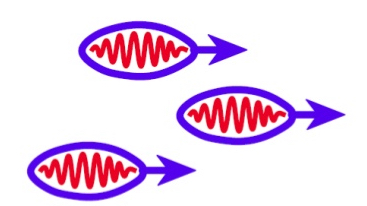“[Planck’s] derivation was of unparalleled boldness, but found brilliant confirmation. … However, it remained unsatisfactory that the [classical mechanical] analysis, which led to [Planck’s Radiation Law], is incompatible with quantum theory, and it is not surprising that Planck himself and all theoreticians who work on this topic incessantly tried to modify the theory such as to base it on noncontradictory foundations.” –Einstein
With his work in 1916-7, Einstein was able to arrive at a “much more” quantum derivation of Planck’s Radiation Law. However, in the end he fell short, having to rely on assumptions. In 1924, Satyendra Nath Bose provided the first “fully” quantum derivation of Planck’s radiation law, which revealed the deeper nature of light that had eluded everyone else, including Einstein. With this work, he created the new area of physics known as quantum statistics.
Max Planck’s Early Life
Max Planck (1858–1947) was born in Kiel, (in modern day Germany), the sixth child to the distinguished jurist and professor of law at the University of Kiel, Johann Julius Wilhelm Planck and his second wife, Emma Patzig. His family culture would bestow in Planck’s life and work a sense of excellence in scholarship, incorruptibility, idealism, reliability, and generosity.
In 1867, when Planck was nine, his father received an appointment at the University of Munich. The family moved and Planck enrolled in the city’s Maximilian Gymnasium where his interest in physics and mathematics was piqued. However, Planck excelled in his other studies as well, in particular music. Thus at the time of graduation, now 16, Planck had the difficult decision of choosing a future in either music or physics; he chose physics.
Continue …
The constant k in Boltzmann’s equation for entropy (S = k ln W) is called Boltzmann’s constant, but it was Planck who actually introduced it.
Einstein’s 1916-7 approach was as close as anyone got to a full quantum derivation of Planck’s Radiation Law, until an unknown physicist from Calcutta, India revisited the problem in 1924, and created the area of quantum statistics.
Quantum Theory was born in 1900 with the pioneering work of German physicist Max Planck (1858-1947).
